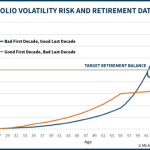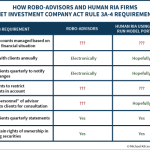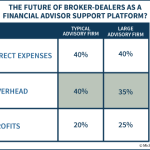The conventional view of sequence-of-return risk is that it’s something retirees face as they take ongoing distributions from a retirement portfolio, and requires caution in the early years of retirement.
Yet the reality is that sequence of return risk is equally relevant for accumulators in the years leading up to retirement as well. The only difference is the problematic sequence is reversed – for retirees, the dangerous sequence is to get bad returns at the beginning (of retirement), while for accumulators it’s getting bad returns at the end (of the accumulation phase) that causes the problem.
In fact, the volatility of an accumulator’s portfolio can also be viewed as its “retirement date risk” – the danger that a planned date of retirement (or financial independence) may turn out to be later than originally expected, due to a poorly timed sequence of bad market returns. And as it turns out, the greater the volatility of the portfolio and reliance on growth, the greater the retirement date risk that goes along with it.
Accordingly, accumulators in the final years leading up to retirement may wish to proactively manage risk and reduce the volatility of the portfolio, specifically as a means to reduce the retirement date risk they face. Of course, getting a portfolio more conservative at the end of the accumulation phase may also force an accumulator to work slightly longer, or save more, to make up for the lower expected returns in those last few years. Still, for those who don’t want the risk of a much later retirement date, a decreasing equity glidepath leading up to retirement may be a very appealing retirement date risk management strategy!









